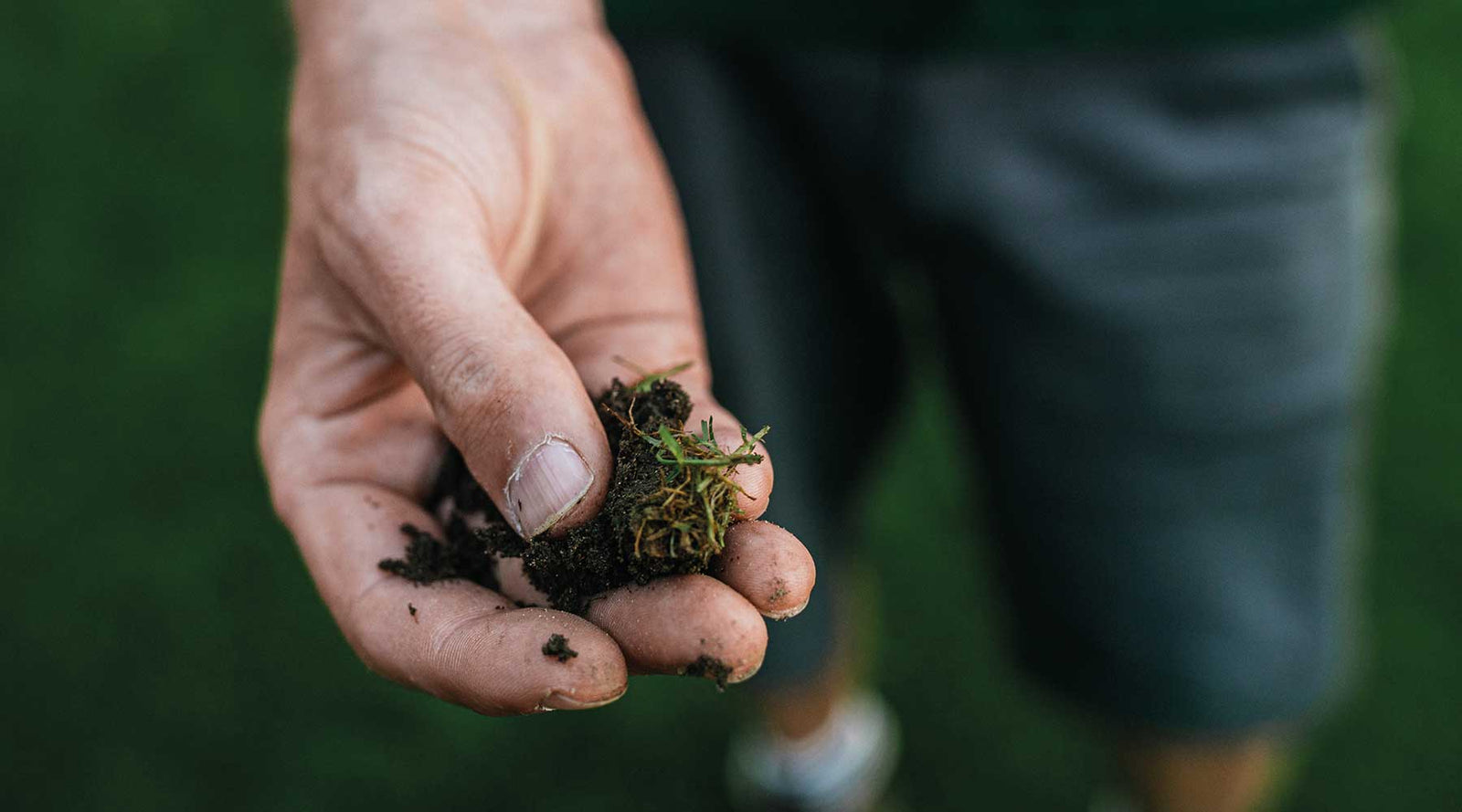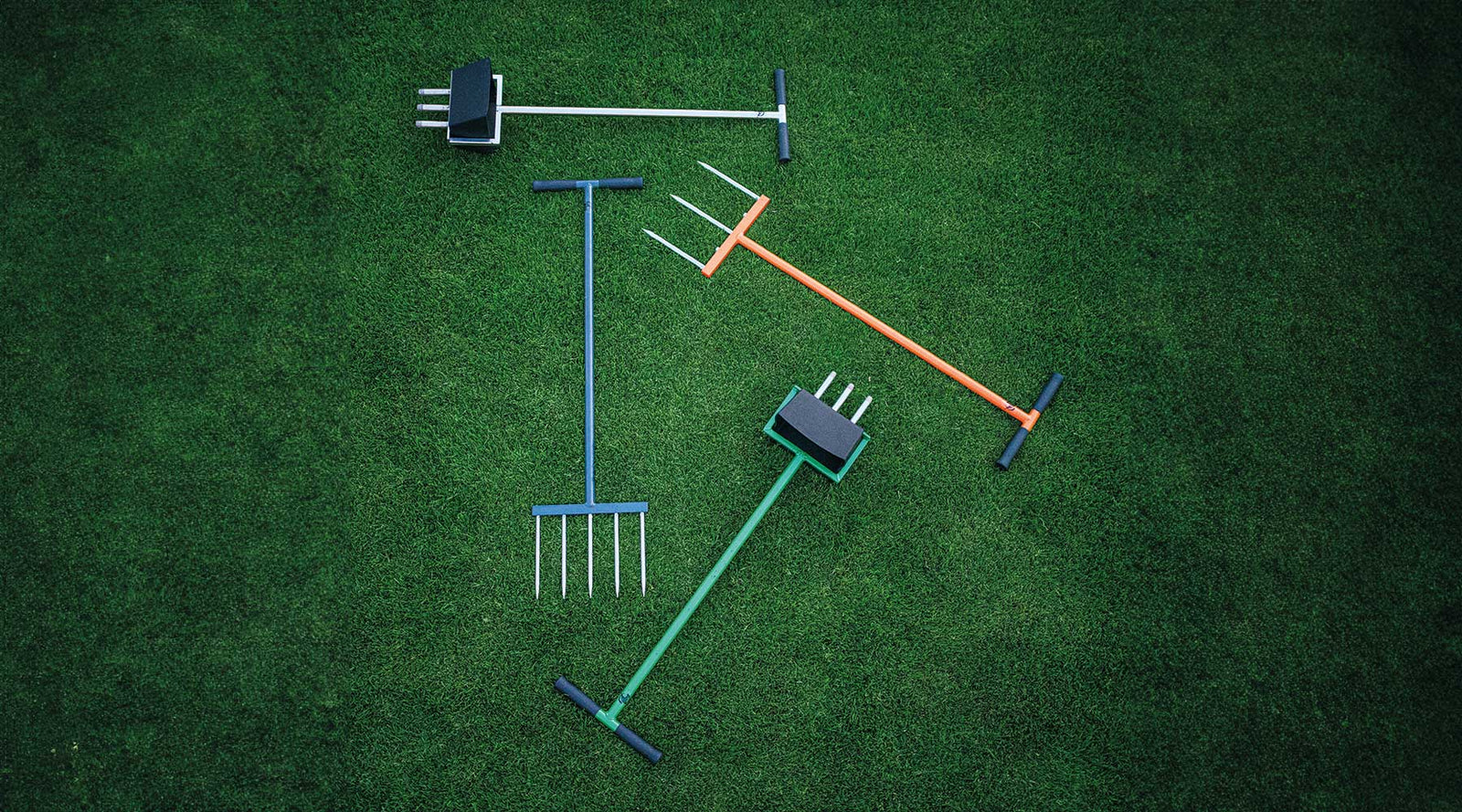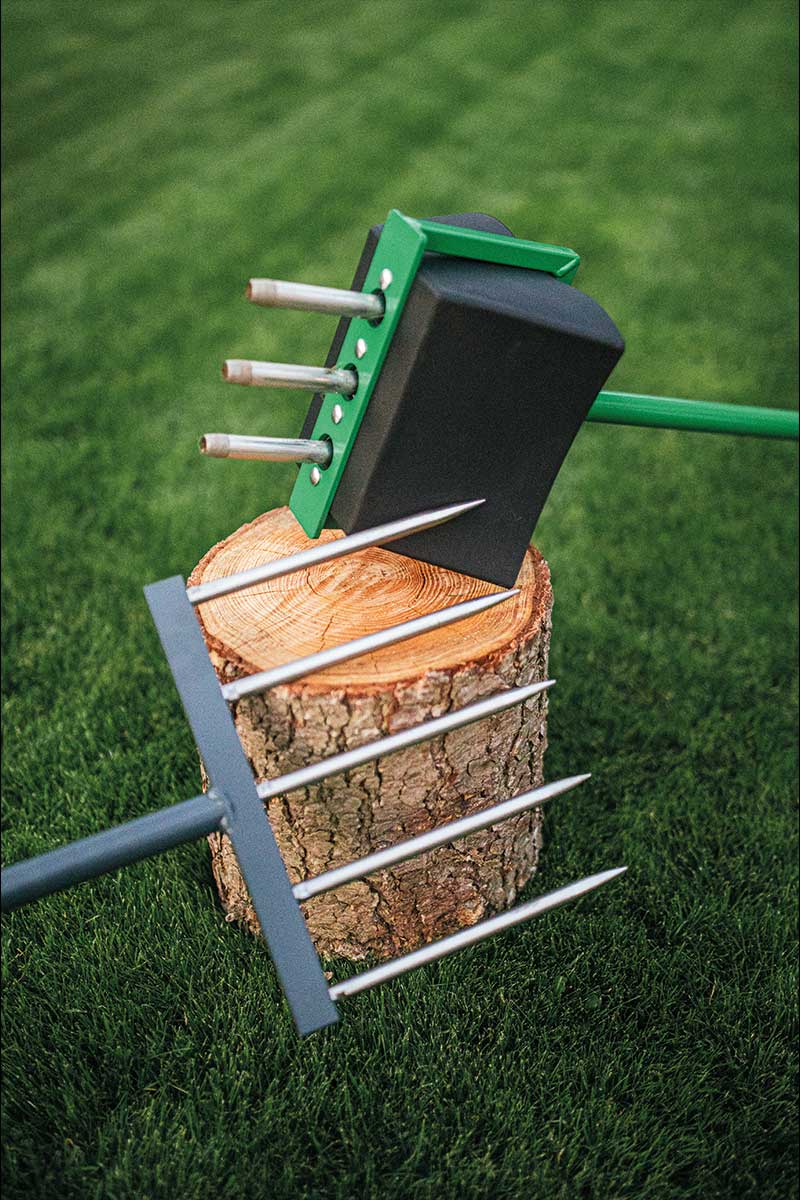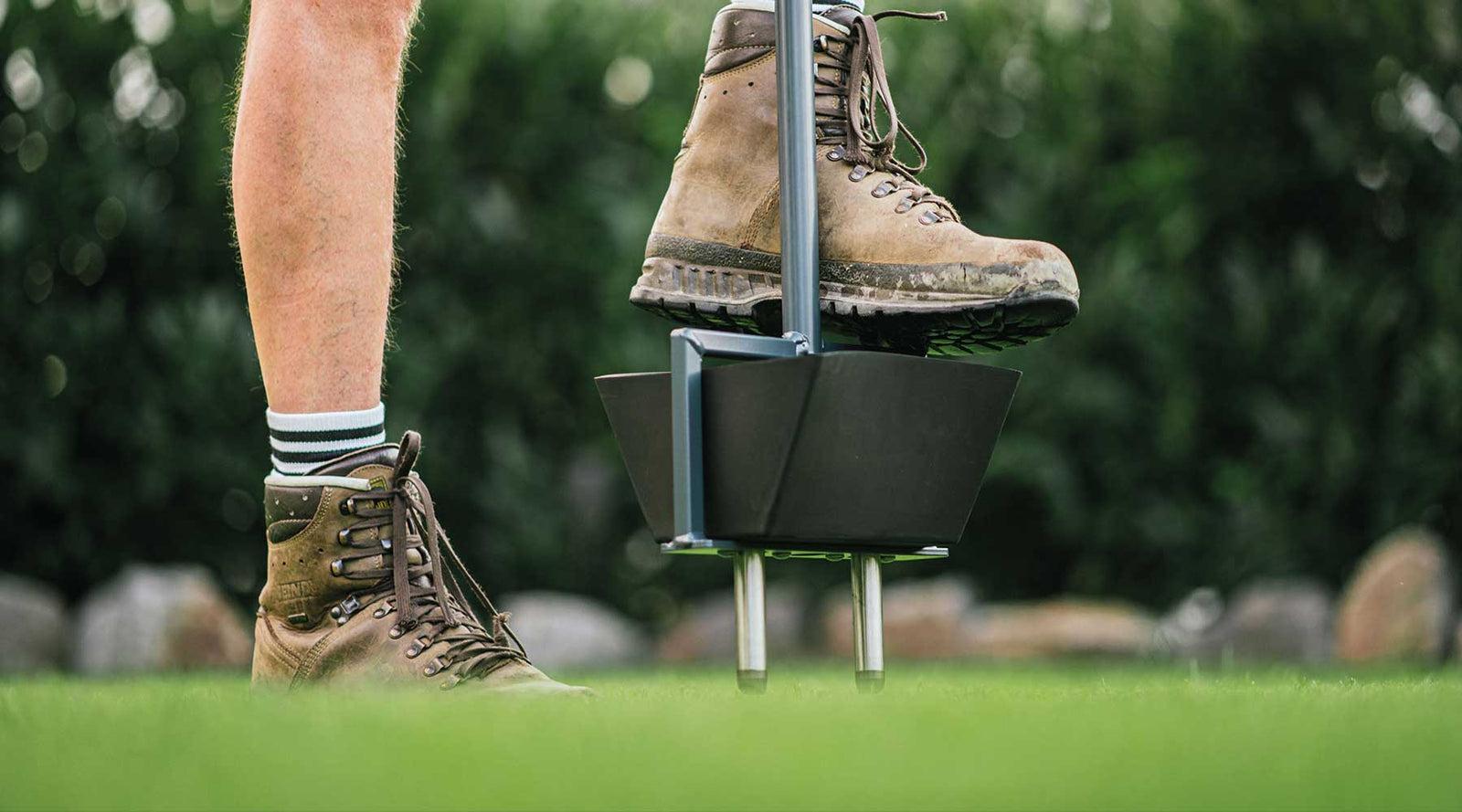I'm often asked how you get such a thick lawn. Well-drained, well-aerated soil is the most important thing in my opinion!
All soils tend to compact under stress, especially in private gardens, where we rarely have a perfect lawn base but often have natural, cohesive soils, the air factor is often underestimated.

WARUM IST LUFT SO WICHTIG?
Der Boden besteht aus festen Bestandteilen unterschiedlicher Korngrößen, je feiner die Körner sind, desto dichter schichten sie sich und bilden nur sehr feine Poren. In diesen Feinporen kann zwar viel Wasser gespeichert werden, es ist aber nicht pflanzenverfügbar und ein hoher Anteil führt unter anderem zu Staunässeproblemen. Die Grobporen hingegen bieten Platz für das Bodenleben , Wurzelwachstum und schaffen eine Drainagemöglichkeit, da das Wasser hier schnell durchsickern kann. In den Mittelporen leben wichtige Bakterien, Pilze und Algen und das hier gehaltene Wasser ist pflanzenverfügbar.
Nach der Rasenanlage haben wir im Idealfall ein ausgewogenes Verhältnis der Porengrößen. Durch die Nutzung, starke Niederschläge und teilweise schwere Arbeitsgeräte nimmt der Anteil der Grob- und Mittelporen im Laufe der Zeit immer mehr ab, die Böden neigen zu Staunässe und Luftmangel - da die Bodenorganismen Sauerstoff benötigen, nimmt das Bodenleben ab - und die Wurzeln bilden sich zurück. Die Folge ist eine lückige Grasnarbe, die Platz für Ungräser und Unkräuter bietet.
Womit aerifizieren wir?
Es gibt eine große Auswahl an Geräten, die den Gasaustausch des Bodens ermöglichen und, je nach Arbeitsweise, den Boden lockern. Geräte, die mit Kreuzspoons, komprimierter Luft/ komprimiertem Wasser, sowie Schlitzgeräte sind für den Privatgebrauch sehr aufwendig, daher möchte ich hier nur auf die Möglichkeit mit Voll-, bzw. Hohlspoons eingehen.


Solid Tines vs. Hollow Tines: How They Affect Soil Aeration
Solid tines, like those used with the Lawnclaw, operate on the principle of soil displacement. There’s a common misconception that such tools compact the soil further, but that’s only partially true. First, you’re only working with about 5-10% of the surface area, and second, you use a slight leverage angle: the tool is slightly tilted before being removed. This minimizes compaction, and the main goal—allowing gas exchange—remains effective.
Hollow tines, like those on the Lawnpecker, remove a portion of the soil, and the holes should be backfilled with suitable sand to maintain stability, as they’re larger and could make the soil unstable if left empty.
For best results, focus on the primary root zone—typically a depth of 2-4 inches (5-10 cm), where compaction is usually greatest. Actions that go deeper are referred to as deep soil loosening, which is especially beneficial before the frost period, leveraging the natural soil-loosening effects of frost.
When is the best time to aerate?
Key Considerations for Aeration: Timing, Conditions, and Tine Type
The soil should always be dry when aerating; saturated, slippery soil can become further compacted. Aeration is best performed during the main growth period, allowing grass to recover quickly from the stress.
For hollow tines, sand backfill is essential, and you may add soil enhancers and overseed. Long solid tines are useful toward the end of the growing season, as deep-penetrating water, which may later freeze, helps break up soil structure naturally (a process known as frost action). In early spring, solid tines aid in warming the soil faster and provide much-needed oxygen to soils that experienced waterlogging during wet, mild winters.
On sports fields or high-traffic pathways, monthly aeration can be beneficial, as compaction from foot traffic typically affects only the top 2.4 inches (6 cm) of soil. Short solid tines, like those on nail shoes and aeration rollers, are ideal for this frequent use, minimizing the impact of regular aeration. Exciting developments from Lawnpecker for this specific purpose are on the horizon.
Wie viele Einstiche pro Quadratmeter?
Um einen optimalen Gasaustausch zu ermöglichen, sollte der Lochabstand bei Hohlspoons ~ 5cm betragen, bei Vollspoons darf dieser, abhängig vom Brechwinkel auch etwas in beide Richtungen variieren. Je nach Durchmesser der Werkzeuge sind also 200-800 Einstiche/m² anzustreben, um das gewünschte Ergebnis zu erzielen.






